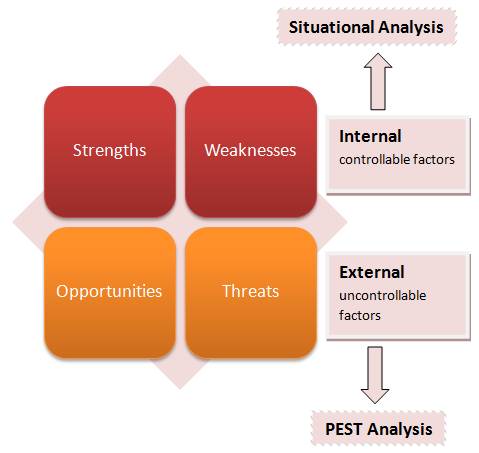Marketing audit
As we have seen, the development of a marketing plan means looking at a number of crucial questions:
- Where are we now? An assessment of the current business position.
- Where do we want to be in the future? This means looking at the business objectives to see where we want to take the business and ensuring that these tie in with the overall corporate objectives.
- How do we achieve these objectives? The business needs to develop the marketing strategies to ensure that they achieve their objectives.
The marketing audit is the way in which businesses answer the first of these questions - where are we now? It is a fundamental part of the marketing planning process and is conducted not only at the beginning of the process, but also at a series of points during the implementation of the plan. The marketing audit considers both internal and external influences on marketing planning, as well as a review of the plan itself.
The marketing audit has similarities to a financial audit in that it is a review or appraisal of existing marketing activities. It is an assessment of past and present performance as well as providing the basis for evaluating possible future courses of action.
The review can be conducted using a SWOT analysis. Figure 1 below is a reminder of the framework used for a SWOT analysis.

Figure 1 SWOT analysis framework
Remember that S and W are internal to the firm and O and T are external.
Firms have some control over the internal factors. An internal weakness, for example, may be a high perceived price. The firm can, if it wishes, reduce this price. A world recession lowering demand for all products is uncontrollable by the firm and is an external factor - in this case a threat.
1. External Factors
External factors can be divided into three groups
- economic environment
- competitive environment
- firm's market environment
Any change in these groups that impact on the firm by allowing it to compete where it previously could not, or diminishing the ability to compete should be included in the audit.
A. The Economic Environment - STEEPLE
| Social and Cultural | Changing demographics (e.g. population growth), lifestyles and cultural values |
|---|---|
| Technological | Communication technologies, internet, world wide web |
| Economic | Incomes, unemployment inflation, economic growth |
| Environmental | Changes in buying behaviour and consumer perception of firm's environmental credentials |
| Political | Government behaviour, tax changes, privatisation, etc |
| Legal | National and international laws - laws in countries where the firm operates |
| Ethics | The firms approach and treatment of its stakeholders |
B. Competitive Environment
The audit should include an assessment of some of the following external factors:
- Threat of new entrants
- Threat of substitute products
- Bargaining power of customers
- Bargaining power of suppliers
- Rivalry between existing competitors
- Key strengths and weaknesses of competitors
C. The Market Environment
The audit should include an assessment of some of the following external factors:
- Total market size, growth and trends
- The nature of the customer
- The perception of the firm's products and brands
- Market characteristics, growth and trends
- Distribution channels
2. Internal Factors
The audit should include an assessment of some of the following internal factors:
- The firm's marketing objectives and strategies
- Total sales split by area, customer, product etc.
- Market share and market growth
- Existing gross and net profit margins
- Existing products and brands
- Fixed and variable costs
- Marketing research
- Effectiveness of marketing mix
A major consideration is the quality and quantity of resources available. This is sometimes categorised as the Five 'M's:
- MEN - Labour
- MONEY - Finance
- MACHINERY - Equipment
- MINUTES - Time
- MATERIALS - Factors of Production
An assessment will be made of the marketing team itself asking some of the following questions:
- How is our marketing team organised?
- How effective and efficient is our marketing team?
- What is the current state of New Product Development?
- How profitable is our product portfolio?
- Have we got our pricing at appropriate levels?
- How effective and efficient is distribution?
- How effective and efficient is our promotion?
Once produced, the marketing audit will help to inform the rest of the marketing plan; where do we want to be and are we going to get there?
